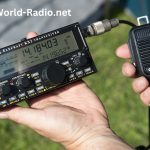As temperatures plunge across the UK, many households struggle to keep warm without breaking the bank. The recent announcement by the Department for Work and Pensions (DWP) to extend Cold Weather Payments to an additional 200,000 people offers some relief. But what exactly are these payments, who qualifies, and how can you ensure you receive them? This comprehensive guide covers everything you need to know about Cold Weather Payments, including eligibility, how they work, and additional tips to stay warm this winter.
Contents
- 1 1. What Are Cold Weather Payments?
- 1.1 2. How Do Cold Weather Payments Work?
- 1.2 3. Why Did DWP Trigger Payments for 200,000 More People?
- 1.3 4. Who Qualifies for Cold Weather Payments?
- 1.4 5. How Are Payments Made?
- 1.5 6. How to Check if Your Area Is Affected
- 1.6 7. The Impact of Cold Weather Payments on Households
- 1.7 8. Tips to Maximize Your Payment
- 1.8 9. Addressing Fuel Poverty in the UK
- 1.9 10. Conclusion: Staying Warm and Informed
- 1.10 11. FAQs
1. What Are Cold Weather Payments?
Cold Weather Payments are a form of financial support provided by the UK government to help vulnerable households manage increased heating costs during extremely cold weather. The payments are triggered when the average temperature in a specific area drops to 0°C (32°F) or below for seven consecutive days. Eligible households receive £25 for each qualifying week, offering a crucial boost during winter.
2. How Do Cold Weather Payments Work?
The payments are designed to ease the financial strain caused by heightened heating expenses in freezing conditions. Here’s a breakdown of how they work:
- Trigger Temperature: The payment is activated if your local temperature averages 0°C or lower for seven days.
- Payment Amount: Each qualifying period results in a £25 payment directly to your bank account.
- Automatic Payments: If you meet the eligibility criteria, payments are automatic—you don’t need to apply.
3. Why Did DWP Trigger Payments for 200,000 More People?
Recently, the DWP announced that another 200,000 individuals would receive Cold Weather Payments due to prolonged freezing conditions reported by the Met Office. The decision comes amid a harsh cold spell affecting regions across the North of England, Scotland, and parts of Wales, where temperatures have dipped to record lows. This expanded support aims to help more households cope with rising energy bills.
4. Who Qualifies for Cold Weather Payments?
Eligibility for Cold Weather Payments isn’t universal; it depends on certain benefits and personal circumstances. Here’s who qualifies:
- Pension Credit Recipients: One of the main qualifiers for Cold Weather Payments.
- Income Support or Jobseeker’s Allowance: Eligible only if you have additional needs, such as a disability or a child under five.
- Universal Credit Beneficiaries: Must meet specific conditions, like having a disabled child or other care responsibilities.
- Support for Mortgage Interest: Available to those receiving this benefit with extra needs.
If you’re unsure whether you qualify, you can check your status through the DWP website or by logging into your benefits account.
5. How Are Payments Made?
The best part about Cold Weather Payments is that they’re automatic for eligible households. Here’s how the process works:
- Direct Deposit: Payments are deposited directly into your bank account.
- No Application Required: The DWP identifies eligible individuals using their existing records.
- Missed Payment?: If you think you qualify but haven’t received your payment, contact the Pension Service or Jobcentre Plus.
6. How to Check if Your Area Is Affected
The government provides a Cold Weather Payment postcode checker online. This tool allows you to confirm whether your area has been affected by recent cold spells that trigger payments. Simply enter your postcode to see if you’re eligible for the £25 payment.
7. The Impact of Cold Weather Payments on Households
For many, these payments are more than just financial assistance—they’re a lifeline during the harshest months. Beneficiaries often use the funds to:
- Buy additional blankets and winter clothing.
- Keep the heating on for longer periods.
- Stock up on essentials like hot water bottles and heating pads.
8. Tips to Maximize Your Payment
While £25 might not seem like much, it can go a long way if used wisely. Here are some tips to stretch your Cold Weather Payment:
- Draft-proof Your Home: Use door snakes and window seals to reduce heat loss.
- Layer Up: Invest in warm, insulating clothing.
- Smart Heating Practices: Use programmable thermostats to manage heating efficiently.
- Community Support: Look into local programs that offer free energy-saving resources, like insulation kits or advice on reducing energy consumption.
9. Addressing Fuel Poverty in the UK
Cold Weather Payments shed light on a broader issue—fuel poverty. With energy costs skyrocketing and wages stagnating, many families face tough choices between heating their homes and other essential expenses. The UK government has introduced additional measures, such as:
- Warm Home Discount: A one-time discount on your electricity bill.
- Winter Fuel Payments: Financial support for pensioners to cover heating costs. However, there’s a growing demand for more sustainable solutions to tackle fuel poverty and protect vulnerable households in the long term.
10. Conclusion: Staying Warm and Informed
The extension of Cold Weather Payments to an additional 200,000 people highlights the government’s commitment to supporting households during extreme cold spells. If you think you’re eligible, keep an eye on your bank account and check the government’s postcode tool for updates. Remember, there are multiple resources available to help you stay warm this winter.
11. FAQs
- How do I check if I’m eligible for Cold Weather Payments? Visit the DWP website or use the online postcode checker.
- When will I receive my Cold Weather Payment? Payments are typically made within 14 days after the cold period ends.
- Do I need to apply for Cold Weather Payments? No, payments are automatic for those who qualify.
- What if I don’t qualify but still need help? Look into other schemes like the Warm Home Discount and Winter Fuel Payment.
- Can I appeal if I don’t receive a payment I believe I’m due? Yes, contact the Pension Service or Jobcentre Plus for assistance.











